When you buy through links in our articles, Future and its syndication partners may earn a commission.
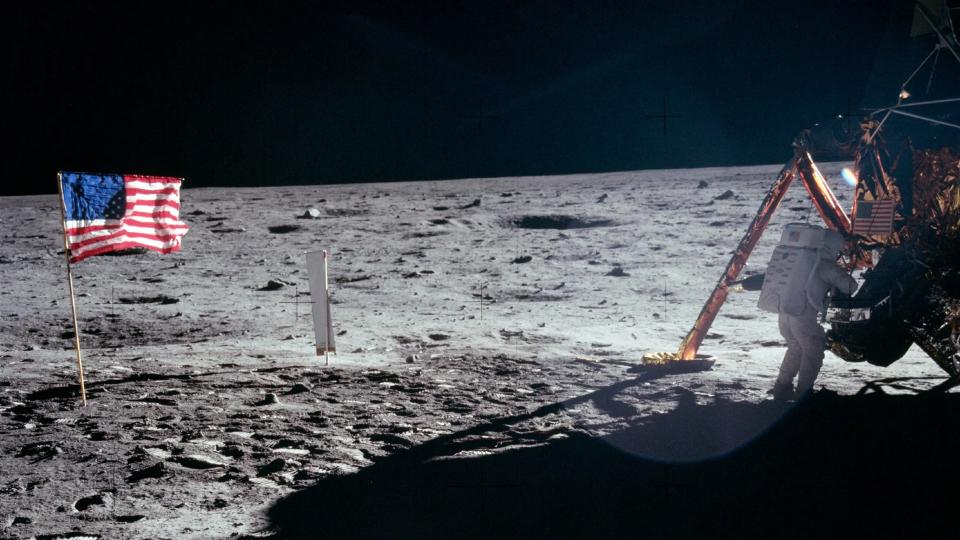
Today, 55 years ago, the Apollo 11 flag raising on the ancient lunar surface took just 10 minutes during Neil Armstrong‘s and Buzz Aldrin‘s two-and-a-half-hour moonwalking adventure in July 1969.
But that important event in the history of vexillology did not come without much debate, discussion, and early concerns over the question of “who owns the moon?” (Vexillology is the study of the history, symbolism, and use of flags.)
Matthew Ward is a senior lecturer in history at the University of Dundee in Scotland. He notes that the American flag is remarkably powerful, seemingly present in the images of almost every major event in American history, from the Apollo moon landings to firefighters raising the flag over the ruins of the World Trade Center on 9/11 in 2001. “It’s hard to think of another flag that is so heavily invested in meaning. The Stars and Stripes expresses the spirit, history and identity of an entire nation,” Ward points out.
Symbolic activity
In the early 1990s, Anne Platoff, then working at Hernandez Engineering Inc. in Houston, Texas, prepared a report for NASA contractors entitled “Where No Flag Has Gone Before: Political and Technical Aspects of Placeing a Flag on the Moon.”
Platoff explains that Apollo 11’s flag-raising on the moon was strictly a symbolic act. Since the United States was a signatory to the United Nations Outer Space Treaty, signing that treaty precluded any territorial claim to the moon.
“Still, there were domestic and international debates about the appropriateness of the event,” Platoff explained. Congress amended NASA’s budget bill to prevent the space agency from unfurling the flags of other countries or international associations on the moon during missions funded solely by the United States.
Platoff notes in her report that the legal status of the Moon would clearly not be affected by the presence of an American flag on the lunar surface, “but NASA was aware of the international controversy that could arise as a result.”
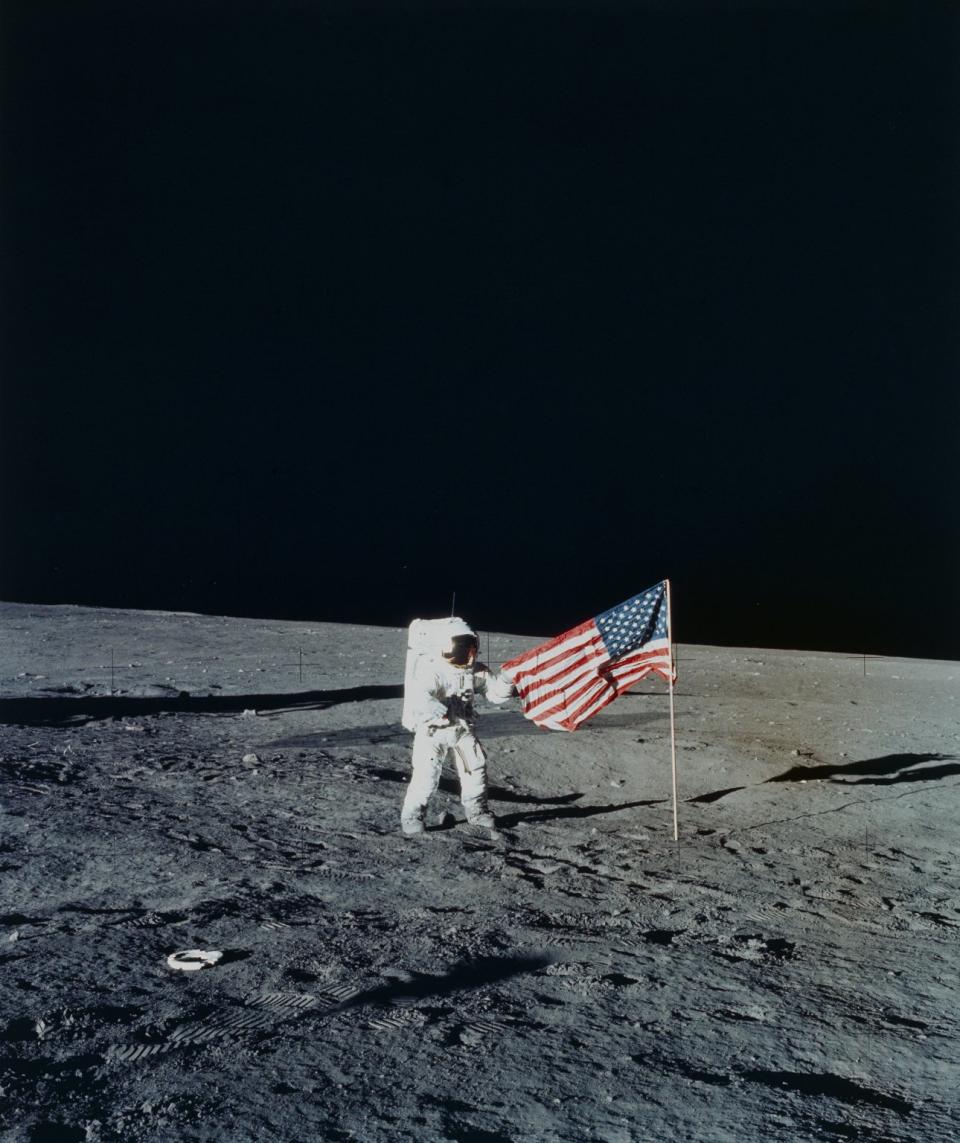

Flagpole design
Platoff points out in her report that raising the Apollo flag also presented technical challenges for NASA engineers.
“They designed a flagpole with a horizontal bar that allowed the flag to ‘fly’ without the benefit of wind to overcome the effects of the moon’s lack of atmosphere. Other factors considered in the design were weight, heat resistance, and ease of assembly by astronauts whose spacesuits limited their range of motion and ability to grip objects,” Platoff explained.
Buzz Aldrin of Apollo 11 later recounted in an article written for To live magazine that as the moonwalker looked at the flag, he felt an “almost mystical unification of all the people in the world at that moment.”
Aldrin also described what it was like when he and Armstrong were able to raise the flag, a pennant they had purchased in Houston for $5.50.
“Just below the powdery surface, the ground was very dense,” Aldrin recalled. “We were only able to push the flagpole in a few inches. It didn’t look very solid.”
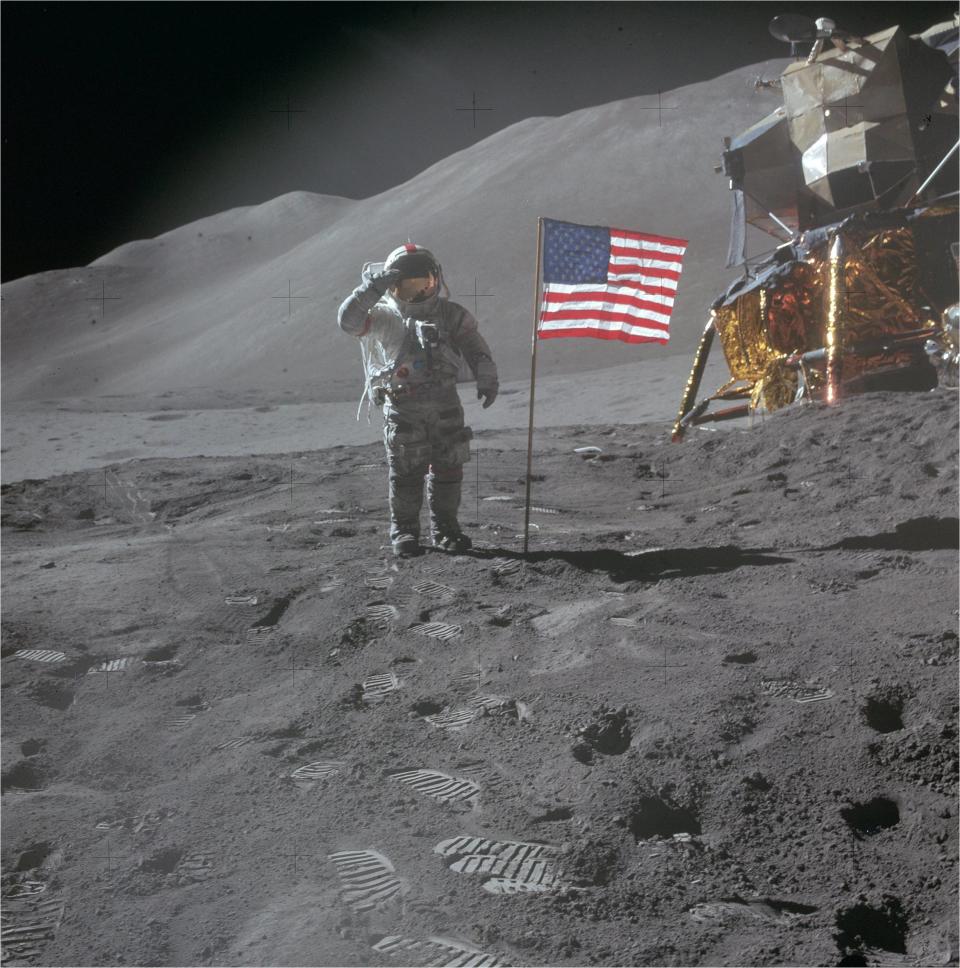

Sun rot
During her research, Platoff discovered that the six flags placed on the Moon by the Apollo moonwalkers were not all the same size.
Of particular note was the Apollo 17 flag planted in December 1972, the program’s final lunar mission. This flag had been displayed in the Mission Operations Control Room during the other Apollo missions and then placed on the Moon by the final moonwalk crew, Eugene Cernan and Jack Schmitt.
What’s not known is the condition of those flags today. Even if the flags were still standing when crews flew off the moon, it’s almost certain they’re not in the same condition as when they were first placed on the lunar surface. “Most likely, the flag’s nylon has degraded due to prolonged exposure to sunlight,” Platoff surmises, a destructive result that’s been tagged as “sun rot.”
The lunar flags have probably become brittle and may have disintegrated over time. Another damaging threat to the lunar flags is the bombardment of the moon by meteoroid impacts, Platoff concludes.
Platoff is now a librarian, historian, and vexillologist at the University of California, Santa Barbara.
“One thing I keep seeing in articles is that the flags would turn white from exposure to sunlight. While this does happen to some flags on Earth, I’m not sure what the chemical process is or whether it would happen in a lunar environment,” Platoff told Space.com.
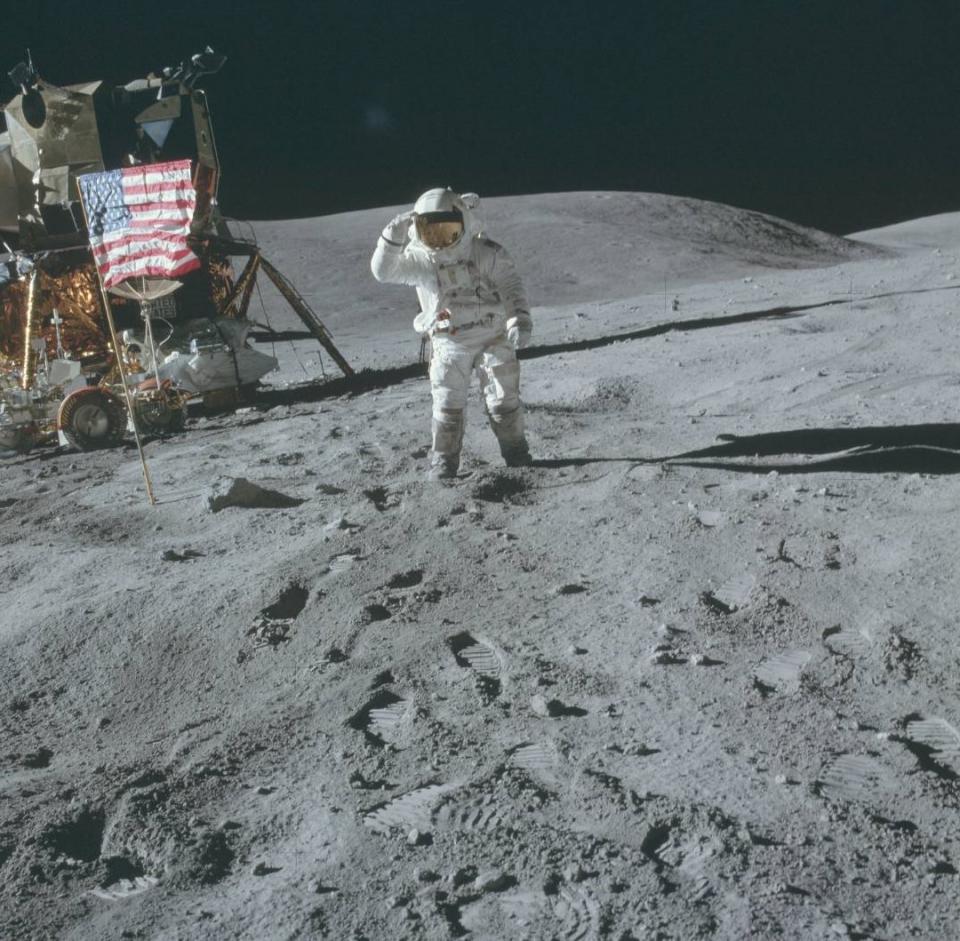

Wanted: Critical thinking skills
As Platoff writes in her 2011 research paper, “Six Flags over Luna: The Role of Flags in Moon Landing Conspiracy Theories,” whether the flags remain up or have been exposed to the lunar harsh conditions for decades, “their legacy as a symbol of human space exploration remains intact.”
Clearly, Platoff said, the significance of these images “will continue long after those who participated in this historic undertaking are gone.”
As for those who support the Apollo moon landing conspiracy theory, Platoff is adamant.
“It’s not hard to disprove the Moon landing conspiracies,” Platoff told Space.com. “There’s enough evidence to show that the Apollo landings were real and that people did walk on the lunar surface.”
The real problem, Platoff adds, is that people need to learn to think critically.
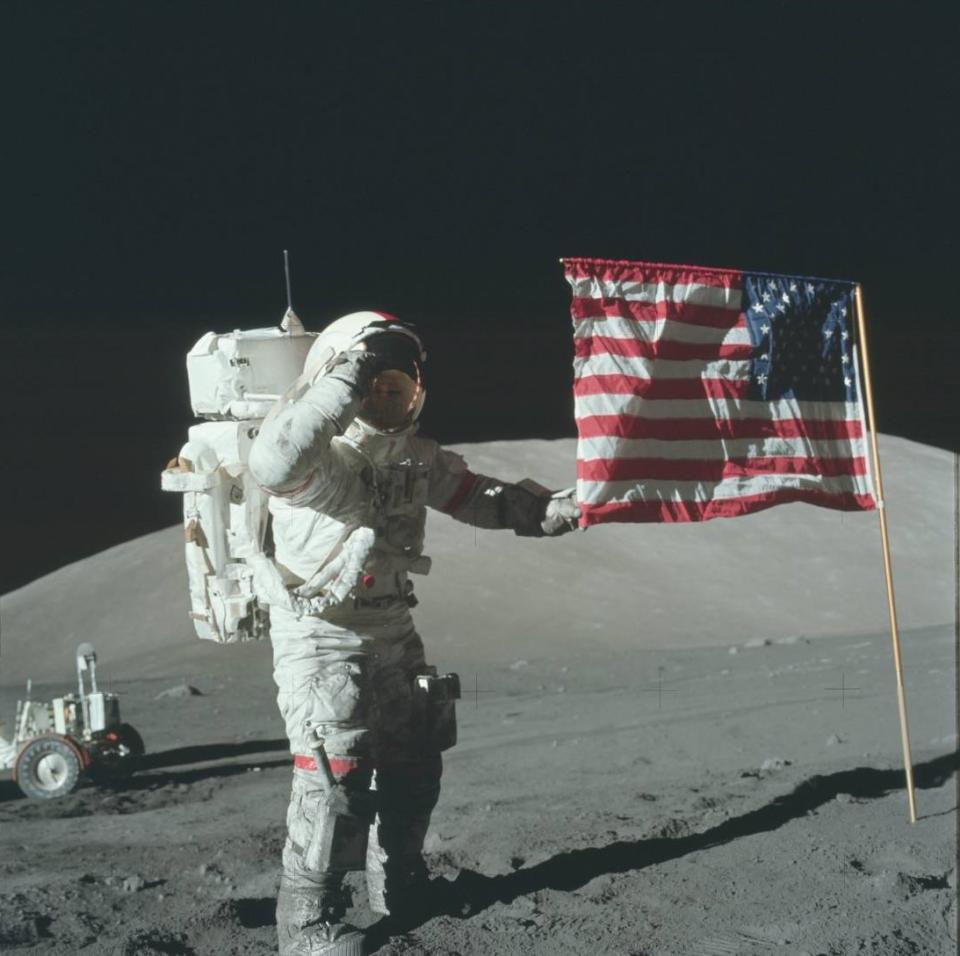

RELATED STORIES:
— Apollo Moon landing flags still standing, photos show
—On the moon, the flags and footprints of Apollo astronauts will not last forever
— American flag of Apollo astronaut secretly carried to the moon to be auctioned
“Do you really think it would be possible to maintain the level of cooperation from everyone involved in the Apollo program to keep the hoax going for fifty-five years? Or is it more likely that people working together could harness the power of science and technology to achieve the goal of landing astronauts on the moon and bringing them home safely?”
People who deny that the Apollo moon landings happened “are free to believe whatever they want, but that doesn’t mean they’re right,” Platoff concludes.